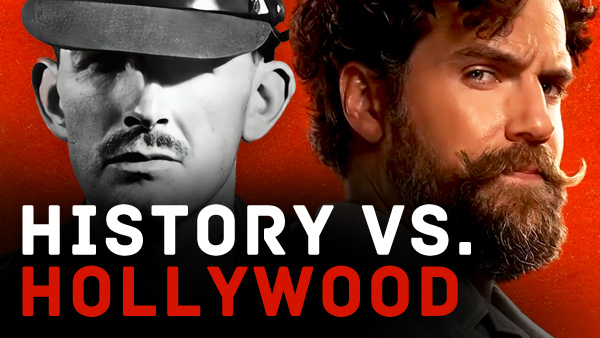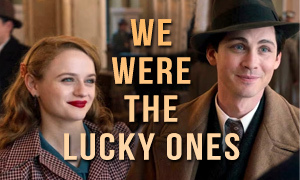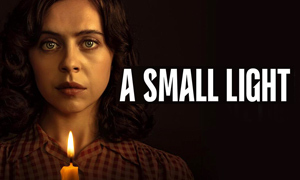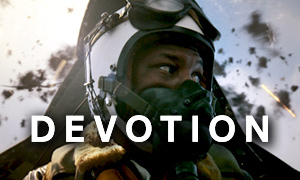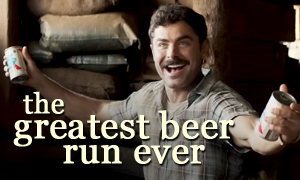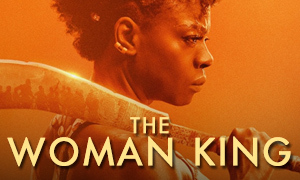22 July: History vs. Hollywood
| REEL FACE: | REAL FACE: |
Jonas Strand Gravli
| Viljar Hanssen
Birthplace: Svalbard, Norway |
Anders Danielsen Lie
Born: January 1, 1979 Birthplace: Oslo, Norway | Anders Breivik
Born: February 13, 1979 Birthplace: Oslo, Norway |
Isak Bakli Aglen
| Torje Hanssen
|
Maria Bock
Born: June 12, 1978 Birthplace: Hammerfest, Norway | Christin Kristoffersen
Born: 1973 Birthplace: Norway |
Thorbjørn Harr
Born: May 24, 1974 Birthplace: Oslo, Norway | Sveinn Are Hanssen
Birthplace: Norway |
Seda Witt
| Lara Rachid
|
Ola G. Furuseth
| Prime Minister Jens Stoltenberg
Born: June 7, 1964 Birthplace: Hønefoss, Norway |
Jon Øigarden
| Geir Lippestad
|
Why did Anders Behring Breivik commit the terrorist acts?
32-year-old Anders Breivik was a white supremacist who carried out his terrorist attacks in the name of rejecting a "Muslim colonization" of Europe, including Norway. He opposed then-Prime Minister Jens Stoltenberg and the Labour Party that elected him, the largest political party in Norway. Breivik targeted PM Stoltenberg and other government officials by placing a bomb in a van just outside the executive government building in Oslo that housed Stoltenberg's office. The explosion killed eight people and injured at least 209, twelve critically. PM Stoltenberg was at home at the time preparing for a speech he was scheduled to give the next day to the youth camp on Utøya island. -US News
Was a security guard killed when he went out to check on the van and it exploded?
No. Early in the movie, a security guard walks out to check on a white van parked outside the government building that houses the prime minister's office. As he's moving in closer to check the license plate, the van explodes. In researching the 22 July true story, we learned that the guard dying in the film is fictional. In reality, a security guard never walked out to take a closer look at the van. Tor-Inge Kristoffersen was the guard on duty at the time and he testified against Anders Breivik at the trial in 2012. Clearly, he lived. The deputy chief of security for the government quarter, Ole Peder Nordheim, said someone going out to check the van and dying in the explosion is not accurate. This was a false rumor that had been started by the Norwegian online newspaper Nettavisen. -Dagbladet
Why did terrorist Anders Breivik attack the young people at the summer camp on Utøya island?
The island of Utøya in Norway's Tyrifjorden lake is owned by the Workers' Youth League (AUF), the youth wing of the social-democratic Labour Party that terrorist Anders Breivik opposed, largely due to the party's stance on Muslim immigration and multiculturalism. The Workers' Youth League was holding its annual summer camp there, where more than 600 Norwegian youths had gathered for five days of fun and energetic political debate. 564 people were on the island at the time of the attack.
Though it's not addressed in the movie, it was Breivik's original intention to also target former prime minister Gro Harlem Brundtland, who had given a speech on the island earlier in the day but was gone when Breivik arrived. He blamed the renovation of Oslo Central railway station for keeping him from arriving while Brundtland was still there. He had traveled 25 miles from where he had set off the car bomb in Oslo's executive government quarter, arriving on the island roughly two hours after the explosion. -Telegraph
Did terrorist Anders Breivik really shout, "You are going to die today, Marxists!" during the attack?
Yes. The 22 July true story confirms that the 6-foot tall Norwegian terrorist reportedly shouted the statement repeatedly during his rampage. -Aftenposten
How long did the terrorist attack last on Utøya island?
The real 2011 terrorist attack on Utøya island lasted approximately 72 minutes, while the attack in the movie feels like it is over rather quickly. This drew criticism from survivors. "The film also does not explain how long the shooting was going on, and a 72-minute living hell is almost eliminated as a little 10 minutes of panic," survivor Emma Martinovic said, who swam away from the island after being shot in the arm. -news.com.au
How many times was Viljar Hanssen shot?
Viljar, then 17, fled from the terrorist by scrambling down a cliff. His main goal was to protect his younger brother, Torje, but they weren't quite out of the view of the man who was trying to kill them. Terrorist Anders Breivik fired at them from above, hitting Viljar five times, striking his left hand, thigh, left shoulder and head. This is portrayed quite accurately in the film. Torje tried to aide his brother, but Viljar pleaded with him to get to safety. In his mind, Viljar reasoned that "death was not an option." Unable to move and nearly unconscious, he reached up to examine the wound on the right side of his skull, something that he does in the movie. The bullet had blown open a hole in his head, and with his fingers, he was able to feel his brain inside.
After the police and rescuers arrived, they got him to Ullevål hospital and he underwent life-saving surgery to remove the bullet fragments from his brain. A couple of the fragments were too close to the brain stem to be safely removed and had to be left in his head. Viljar woke from a coma six days later. -The Sun
What were the extent of Viljar Hanssen's injuries?
The bullet that entered his brain through the right side of his skull resulted in him losing sight in his right eye. He also had to learn how to walk and write again. The injury to his skull means that falling and bumping his head could be fatal. There were bullet fragments that were too close to his brainstem to be removed. If they ever shift, he could die. In addition to the injuries to his head, Viljar lost three fingers on his left hand and was also shot in the left shoulder and thigh. -The Sun
How many people did Anders Breivik kill on Utøya island?
Like in the film, Breivik was dressed in a homemade police uniform. He presented a fake ID and took a ferry out to the island, first claiming the lives of camp leader Monica Bøsei and security officer Trond Berntsen. He then turned his attention to shooting the summer camp participants, first signaling to them to gather around him and then pulling weapons from his bag and opening fire, killing numerous people. When his near hour-long shooting spree came to an end, he had taken the lives of 69 people on the island and injured approximately 110, 55 of them seriously. It was at that point that Norway police took him into custody. During a hearing in Oslo, he said that he wanted to give a "signal that could not be misunderstood" in order to limit future recruitment to the Labour Party. -Telegraph
Does the movie leave out any key events on the island?
Yes. A fact-check of the 22 July movie revealed several notable omissions. In the film, we see terrorist Anders Breivik make his way into a building where he kills several young people hunkered down in a room. In real life, Breivik also attempted to enter a school house where 47 campers were hiding. He was unsuccessful at getting in, which saved the lives of the 47 people inside.
The movie also fails to show the campers who tried to swim away from the island (some to the mainland) and were rescued by civilians in boats. They were plucked from the water shivering and bleeding.
"I understand that it’s hard to make a movie that takes 'care' of everything — how it happened, why, and so on, but there are a lot of scenes that I wondered, 'Why isn't this mentioned here?'" said survivor Emma Martinovic.-news.com.au
Did Anders Breivik really surrender to police?
Yes, but the movie leaves out the fact that Breivik called the police at least twice from the island, telling them he wanted to surrender. He hung up on the first emergency operator after being pressured to give them his mobile number. 20 minutes later he made a second call, telling the operator: "I completed my operation … so I want to … surrender." He then hung up on that operator as well.
In the film, the police SWAT team happens upon Breivik in the woods on the island and he willingly gives himself up. This part is in line with the 22 July true story. In real life, heavily armed police came upon him in the woods. He hesitated at first, but gave himself up after a police Delta Force officer yelled, "Surrender or be shot!" -The Guardian
Is Viljar's friend in the movie, Lara, based on a real person?
Yes. The real Lara Rachid was a 17-year-old Kurdish refugee whose family had fled from the war in Iraq when she was very young. She talks about this during her testimony at the trial in the movie. Lara had been in the camp's shower block when the attack began and she managed to run and hide. Like in the 22 July movie, Lara’s sister, Bano (18), was murdered by Anders Breivik on the island. Lara and her sister are pictured below prior to the attack. Watch an interview with the real Lara Rachid that includes footage of her sister, Bano, on the day of the attack. -The Sun
Did lawyer Geir Lippestad really receive death threats for defending a mass murderer?
Yes. The movie depicts Lippestad's family receiving threatening phone calls. In real life, individuals who perceived Lippestad as a Nazi sympathizer also painted a swastika on his house. His reason for defending a mass murderer is the same that's given in the movie, that everyone is entitled to a proper defense to guarantee that justice is rightly carried out.
Was English spoken in real life?
No. In reality, Norwegian is the language spoken amongst the people of Norway. The main characters would have been speaking Norwegian to each other in real life, as it is the first language of 95% of the population. The filmmakers chose to use English in the movie in order to make it accessible to a larger audience. -The Hollywood Reporter
Is the 22 July movie based on a book?
Yes. The movie was inspired by The New York Times Bestselling book One of Us by Åsne Seierstad. The book looks at how a child from a well-to-do neighborhood in Oslo grew up to become one of Europe's most heinous terrorists. It also introduces us to Anders Behring Breivik's young victims and how their political awakenings and hopes for the future led them to Utøya island on July 22, 2011. Seierstad's acclaimed book was named one of the ten best books of 2015 by The New York Times.
Did an extremist who Anders Breivik idolized really testify in court?
No. In the 22 July movie, a right-wing extremist testifies to help validate Anders Breivik's beliefs and actions to prove he is not insane. Endride Eidsvold, the actor who plays the extremist in the film, told Dagbladet that the extremist he portrays is a combination of several of the people that Breivik had contact with and idolized. This includes Peder Nøstvold Jensen, better known as "Fjordman", who Breivik mentioned quite extensively in his manifesto. Nøstvold Jensen had been in the defense's witness list, but he was dropped and never had to testify.
Did Viljar really joke in court that losing his eye meant he didn't have to look over at terrorist Anders Breivik?
No. During our 22 July fact-check, we discovered that the testimony heard in the movie differs significantly from the court transcript. This includes Viljar's joke about his eye, which is entirely fictional. "I'm blind in one eye, but that's a relief. A relief in a way that at least now I don't have to look at him," he says in the film, nodding toward Anders Breivik. He never said it in real life and it does not appear in the transcript of Viljar's testimony from the Breivik trial. Though much of Viljar's testimony was made more dramatic for the film, terrorist Anders Breivik was indeed present in the courtroom.
Is Anders Breivik's prison sentence depicted accurately in the movie?
No. The movie fails to mention the controversial details surrounding the punishment, which have sparked both outrage and criticism. The film somewhat erroneously depicts terrorist Anders Breivik being sentenced to indefinite imprisonment. In reality, Breivik, who killed 77 people, was sentenced to just 21 years confinement, which is the maximum sentence given in Norway for offenses other than genocide or war crimes. There is no death penalty, and if the court feels he's no longer a threat to society, Breivik, now 39, could be released. If he is in fact still deemed a threat, then he could be held indefinitely as emphasized in the film. The country operates a progressive prison system and holds the position that all criminals can be rehabilitated.
Did Anders Breivik's lawyer, Geir Lippestad, really refuse to shake his hand during their last meeting?
No. "We met with a glass wall between us, so it was not possible to take each other in hand. But I would have done it if I had the opportunity," Lippestad told Dagbladet.
Did terrorist Anders Breivik really win a human rights case where he cited that it was inhumane for him to be kept alone in a cell?
Astonishingly, yes. In addition to complaining about being lonesome by himself, he complained that the prison's strip searches had violated his human rights. He won the 2016 case, but the verdict was overturned in 2017 and the European Court of Human Rights rejected his 2018 appeal. Breivik also complained about his coffee being too cold, having a "painful" chair to sit on instead of a couch, and that his pen was ergonomically insufficient.
Survivors were disgusted that he was complaining about his conditions at Norway's Skien prison, which are superior to most U.S. college dorms. According to Agence France Presse, Breivik's prison quarters are made up of three personal cells: one for living, one for exercise, and one for studying, plus a bathroom. He had newspapers, a personal computer (no Internet access), a TV, and a Playstation 2, that latter of which he deemed insufficient and threatened to go on a hunger strike if it was not upgraded to a Playstation 3.
"Shut the f**k up and take your punishment as the coward you are," said survivor Emma Martinovic, who was shot in the arm by Breivik. "You killed so many people and acted [like] God for some hours and now you are complaining that you are having a hard time in jail when you don’t even know what it means to have a hard time. Coward. Loser." As of 2015, Anders Breivik was studying to obtain a degree in political science from the University of Oslo. A representative from the university visited his cell to teach the classes. -news.com.au
What is survivor Viljar Hanssen doing today?
Viljar, who was 25 in October 2018 at the time of this article, has attempted to make his voice matter more by becoming more involved in politics. He is currently competing in an election to become a councillor in Tromso, northern Norway. Viljar's younger brother, Torje, is a musician who is currently studying music production at Westerdals. Their parents have divorced since the tragedy and their mother remarried in 2017. -The Sun
Did the filmmakers shoot the movie on Utøya island?
No. "We obviously didn't shoot on the island itself, though the island that we shot on looks identical," said director Paul Greengrass. -Variety
Survivor Interviews & Related Videos
Expand your knowledge of the 22 July true story by watching an interview with Lara Rachid, a survivor of the 2011 Norway attacks whose sister, Bano, was murdered on Utøya island.
Link-to-Learn More:
